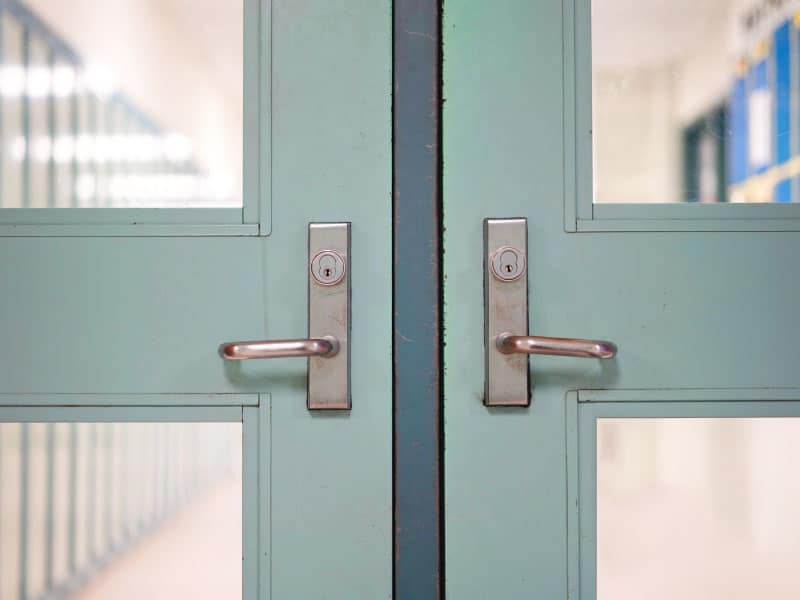School Safety During an Emergency
When an emergency strikes your school, the situation must be handled quickly and effectively to minimize further risk and incidents. Does your school provide a safe school environment during an emergency? It’s vital that each situation has been carefully planned for and that a comprehensive implementation plan is actioned.
There’re many school emergencies that can occur such as: fires, floods, student injuries, dangerous animals, gas leaks, missing students, hostage, or bomb situations and many other events. When your school can effectively manage an emergency, your school has the opportunity to provide additional support to students and educators, while developing effective coping mechanisms for everyone involved.
Here’s what your school should be doing to keep safe in an emergency.
Regulatory Compliance
Schools must be aware of the latest local regulations and written policies and procedures when it comes to handling emergency situations. If your school wants to effectively manage emergency situations, you can regularly practice, monitor, and review existing policies and procedures with educators, and pass on the necessary information and steps to students. By doing this, your school can ensure both students and educators are clear on the complying with legal and organisational regulations. If you want to be proactive and maximize your school safety, you can display a floor plan of the school with the required steps and procedures near exit doors and in classrooms. This enables students to easily review the required actions for an emergency and become familiar with them.
Delegate Educator Roles and Responsibilities
For a school safety plan to be successful during an emergency, it’s essential for the roles and responsibilities to be delegated to the appropriate educators and employees. These roles should be frequently discussed in meetings and practiced each month for everyone to be aware of what their role entitles and what their responsibilities are in the event of an emergency. The safety of students is the number one priority of schools and it’s important you do everything possible to maintain a safe environment for everyone.
Develop Evacuation Plans
Evacuation plans are used when a school must immediately leave the area as the school facility is no longer safe and there’s risks of danger to the wellbeing of students and educators. Evacuation plans are vital and must be implemented and practiced in all schools. To further protect the safety of your school, you can display the plan on a map in a prominent area throughout the school so it can be reviewed. The one-page map must be simple and have an assemble location and step-by-step overview of the evacuation process.
Here are 7 key steps in an evacuation plan:
- Sound the school warning alarm
- The nominated employer or supervisor can dial 911
- The nominated employee can collect an emergency pack (mobile, first aid, attendance list and records)
- All educators must direct students to the nominated assembly locations (often a large open space such as an oval or sports court)
- Check student attendance list
- Wait for emergency services and agencies to attend
- Remain at assembly location until advised by emergency services it’s safe to return to the school facilities.
Plan for School Lockdowns
In some emergencies, your school employees can manage a lockdown without the need for emergency services. More serious situations like threats of violence from intruders will require emergency services. When emergency services are needed, the school must act fast by locking doors, closing windows, and getting students and educators to hide under tables and stay down low out of site from intruders.
Here are 8 key steps in a lockdown plan:
- Sound the school warning alarm
- The nominated employer or supervisor to dial 911 (if required)
- Immediately lock all doors, windows, and access points, while closing blinds (if available)
- Ensure everyone is hidden and stays down low out of site from the intruders
- Check the attendance list of students
- Educators should provide support to students – try to calm them down and remain quiet
- Liaise with emergency services and delegate communications across the school
- Remain in lockdown until emergency services give all clear
Improve School Safety with an Emergency Pack
If your school is organized and prepared with an emergency pack, you can improve your school safety during an emergency. An emergency pack contains a range of supplies that might be required should an emergency situation occur. Your school can ensure the emergency pack is always prepared by scheduling monthly checks during your audit and practice of emergency plans. What should your emergency pack contain to improve school safety during an emergency?
- Portable first aid kit
- Portable emergency contact list (laminated to prevent damage)
- Tissues
- Plastic bags
- Fully charged mobile phone
- Copy of evacuation and lockdown plan and procedures
- Reading books to entertain distressed students
- Bottled water and plastic cups
An emergency pack can contain a range of items which can be tailored to the needs of your students and your school.
To improve safety during an emergency, your school must constantly review existing plans and procedures, undertake audits and find new ways to advance your plans and procedures, educate both employees and students and regularly practice the required steps and procedures with employees and students. By considering these factors and implementing new precautions to ensure your plans are up-to-date and effective, your school can provide a safer school environment during an emergency. By having a clear plan for the management of emergency situations, your school can quickly reduce the risks of harm and closely monitor students who are unable to concentrate or cope during an emergency.


